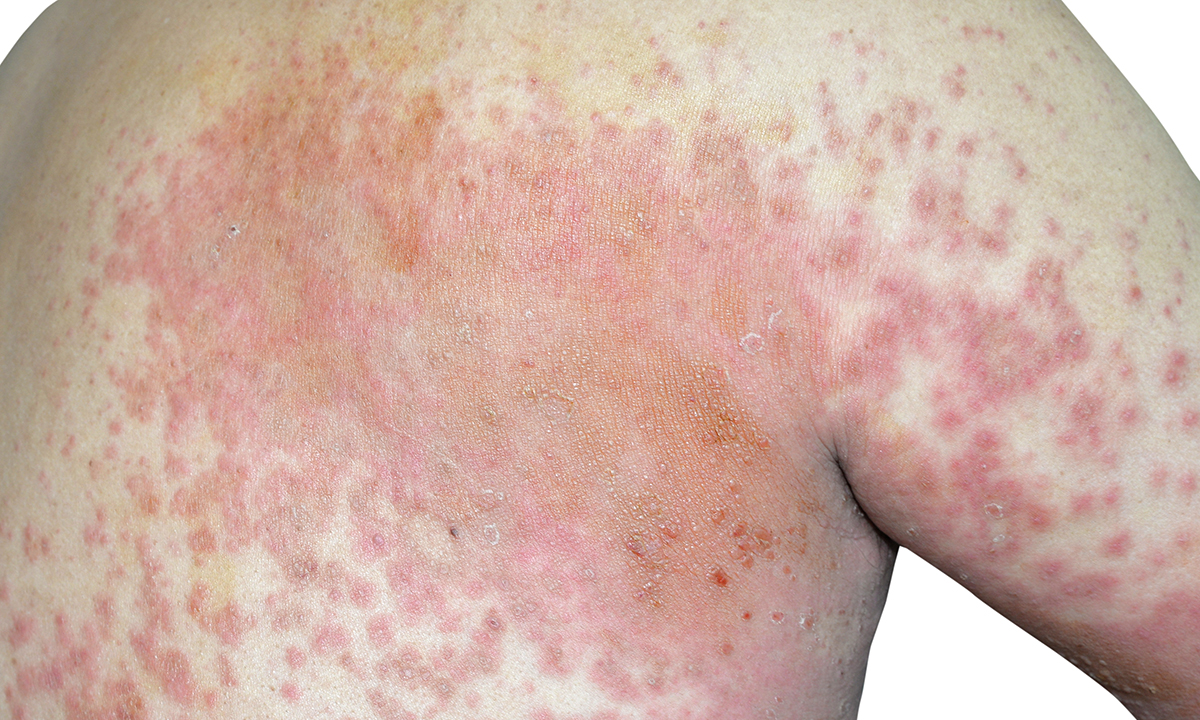IT IS one of the most common inflammatory skin conditions, affecting around a quarter of Australian children and 7% of adults. Quite apart from being unsightly, atopic dermatitis can have a debilitating impact on a patient’s mental and physical wellbeing, and while the majority respond to intensive topical therapy, there remains a small number of patients for whom conventional treatment doesn’t do the trick. But help is on its way, say the authors of a new Narrative Review published in the MJA.
The article by Sydney-based dermatologist Professor Alan Cooper and research fellow Dr Victoria Harris, outlines the pathogenesis and key management principles for the chronic, pruritic skin disease characterised by cutaneous barrier deficiency and associated inflammation.
In an exclusive podcast for MJA InSight, Professor Cooper said that appropriate use of emollients was vital in treating atopic dermatitis.
“This unfortunately gets overlooked. People will be diligent with their emollients for a while, but it gets difficult and, next thing you know, their eczema has got bad again. So, the gold standard is emollients: people who are diligent can often control their condition without needing anything else.”
If not, a range of topical treatments can be used, including antihistamines, corticosteroids and calcineurin inhibitors, as well as antimicrobial and antiseptic measures. Oral immunosuppression can be added in cases of severe, refractory disease.
Until recently, that was pretty much the end of the treatment road, which left a small but stubborn number of patients not responding to these therapy options, or unable to tolerate them. Now, even these patients are likely to get help thanks to targeted immunotherapy options currently under investigation.
Rodney Sinclair, a practising dermatologist and Professor of Dermatology at the University of Melbourne, said that the likely advent of these biologic therapies is “incredibly promising”.
“They are going to be particularly helpful because with one of the main conventional therapies, prednisolone, the problem is that people get short term control, but as soon as they stop, they rebound, so they get hooked on what should be a short term therapy. So, these people will be able to benefit from these other, highly effective agents.”
Professor Sinclair, a Fellow of the Australasian College of Dermatologists, singled out dupilumab and tralokinumab, which both target the interleukin-13 inflammatory pathway, and the Janus associated kinase inhibitor tofacitinib, as the targeted therapies showing the most promise. All three have already progressed to phase 3 trials for atopic dermatitis. None has yet been approved by Australia’s Therapeutic Goods Administration, although dupilumab was greenlighted by the European Medicines Agency in September 2017.
Professor Sinclair said that progress with these new biologic agents is likely to follow the example of psoriasis, where biologics were first approved over 15 years ago.
“What we saw with psoriasis initially was that with the first generation of biologics, around 30% of patients were getting a 70% improvement, which was the minimum for continuing treatment. But now we’re on to the third or fourth generation, and about 90% of patients are getting 90% improvement. Once the industry recognises the size of the potential market for atopic dermatitis, we’ll see second and third generation biologics, with a similar improvement trajectory.”
Professor Sinclair signalled two other recent developments that have affected the treatment of the condition in recent years.
“One big innovation that has changed patient management has been antiseptic or bleach baths. They have made a big difference, and have really only been in popular use for about 4 or 5 years.”
He said that the other development was the increasing realisation of the importance of maintenance therapy.
“Once the clinical manifestation of eczema is resolved, it doesn’t mean that the inflammation has resolved and the skin is back to normal. Treatment often needs to be continued beyond the clinical disappearance of the rash, because it can take up to 6 weeks before the skin is back to normal and hardy.”
Professor Sinclair noted that for patients with severe disease that was proving resistant to treatment, several Australian trials are currently enrolling to test the new biologic therapies. Patients and treating doctors can search the Australian Clinical Trials site here.
To find a doctor, or a job, to use GP Desktop and Doctors Health, book and track your CPD, and buy textbooks and guidelines, visit doctorportal.

 more_vert
more_vert
Does Duplimab mask the horrendous symptoms of withdrawal for the people who have become addicted to topical corticosteroids?
Withdrawal can take a anywhere between 2-4 years.
Do these sufferers still exhibit withdrawal symptoms after 2 years?
Does Dupilumab cure eczema?
How long do sufferers have to continue taking it?
Are there withdrawal symptoms when they stop taking the Dupilumab?